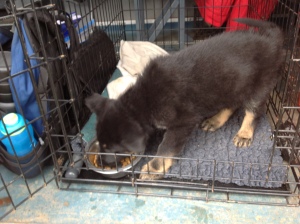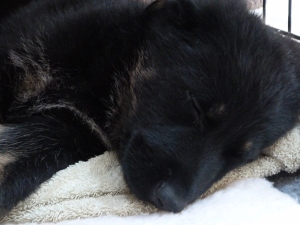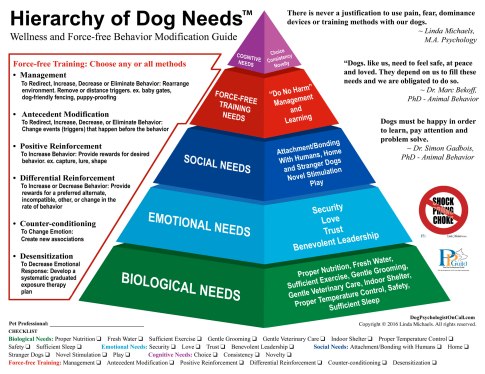I’ve been training Police dogs for 15 years and at the time felt the need to differentiate myself from other, more traditional Police dog training which contained not only a lot of physical corrections but was also structured in such a way (or not structured) that it was causing many of the problems it was trying to resolve or just not making the most efficient use of time and energy, both commodities in limited supply.
Whilst there has been much progress in our understanding of dogs and their capabilities in that time, the training methodology is lagging behind. There appears to be a wealth of confusion about what is and isn’t true and hot debates about what is or isn’t an acceptable training technique. Whilst the phrases positive trainer and force free trainer are a nod towards a style of training, there are many trying to use semantics to undermine the efforts. I therefore felt it was time to set out my stall. To explain just what I am looking to achieve.
My aim is to train Police dogs to the highest standards possible in the most humane way possible . I will not sacrifice dog welfare for performance but clearly have standards to meet. I am often under time pressure and so need the most efficient way of training I can find. I am also aware that there are no quick fixes or shortcuts and good foundation training is paramount to future success. Attempts to take shortcuts almost always come back to bite you (literally) and often end up taking far more time to rectify than if you had done it properly in the first place.
My aim is to set the dog up for success and to positively reinforce the behaviours I want. I use careful management to prevent the learning of unwanted behaviours. My aim is to get the dog to want to perform the behaviours I want and to perform them reliably on cue (command). That way he is working with me not against me and it is surprising how much easier that makes things. Most knowledgeable trainers work like this these days.
I am not permissive as many seem to believe. In fact, I am probably one of the strictest trainers I know in that I am so aware of my rules, of the dogs behaviour and where I am in the training process that I very rarely let anything slide.
Where I deviate from many trainers is when to comes to consequences. All behaviour is affected by the consequences and whilst I make my desired behaviours highly reinforcing for the dog, it is my treatment of unwanted behaviours that often causes people concern or that people can’t quite believe is sufficient to have any reliable effect.
I have attempted quite successfully to remove all physical punishments, pain and threats of the aforementioned methods and maintained the desired standards. In some areas I would say I actually exceed the standard attained by some more traditionally trained dogs especially in relation to self control around bite related elements although this is as much a part of the overall big picture as being attributable to the removal of physical punishment.
The reason I even started trying to remove physical corrections (punishment) was because it was obvious to me that it was responsible for creating a lot of stress in the dog. Stress is a block to learning and so slowed up training but it was also at the heart of nearly all incidents of aggression toward the handler. Many of the dogs subject to such treatment folded under the pressure and were washed out of the training programme. huge amounts of time and effort were lost, looking for new dogs and starting the process again. Others fought back causing harm to their handlers and in more than a few cases, resulting in the euthanasia of the dog.
I now find myself in a position where the structure of our training allows me to train the dog in a way whereby the withholding of rewards and time outs communicated through a conditioned negative punisher (quitting signal) is all that is required. So clearly my training is not positive only as anyone who understands the quadrants knows such a scenario is probably not possible even under the strictest laboratory conditions.
I also use force in that I physically hold my dogs, I put them on a lead and clearly if they lunge or pull I will use what could be described as force to hold onto them. Just as the force of gravity is always upon us, it is impossible to touch another being without that touch technically being force. What I don’t do though is deliberately apply force in a manner that would cause pain or discomfort or rely these methods in training. When I write a lesson plan for training (yes, that is what I have to do), nowhere in the lesson plan will anybody ever be asked by me to administer what would generally be known as a physical correction.
The methods used by the handler on their dog are only part of the picture for Police dogs. The role of the agitators (helpers) are also vital. Whilst close inspection of the training would show that some of the training involving the helper would fit within the negative reinforcement quadrant, the manner of the training is such that the aversive is small enough that the dog is never far from it’s comfort zone. The aim after all is to reinforce the behaviour we desire and not to push the dog into avoidance. In the same way that a trained fighter relishes the chance to pit their training against an adversary, so the aim is to produce a dog with the same attitude. Whilst some may not condone fighting or the use of dogs for law enforcement, they should console themselves in the fact that the dogs are selected because they have the required qualities and combined with appropriate training, scenarios that some dogs would find distressing are to the Police dog the eustress inducing situations that adrenaline junkies work so hard to achieve.
I feel strongly that dogs should be treated with respect and this includes training them in a manner which puts their welfare above performance. This invariably means seeking ways to ensure training methods are as humane as they can be and as such the ethos of all training regimes should be to strip out any training that could be achieved in a less intrusive way. Only by being as professional and ethical as we can be in training dogs for military and law enforcement can we justify placing dogs in harms way whilst they live out their lives in servitude to us.
That’s where I’m at. That’s what I’m trying to achieve. That’s what I’m trying to encourage others to aspire to as well. Ask yourself this question. If you were a dog, would you be happy being YOUR dog?
This great visual by Linda Michaels really captures my approach to living with and training dogs.





















